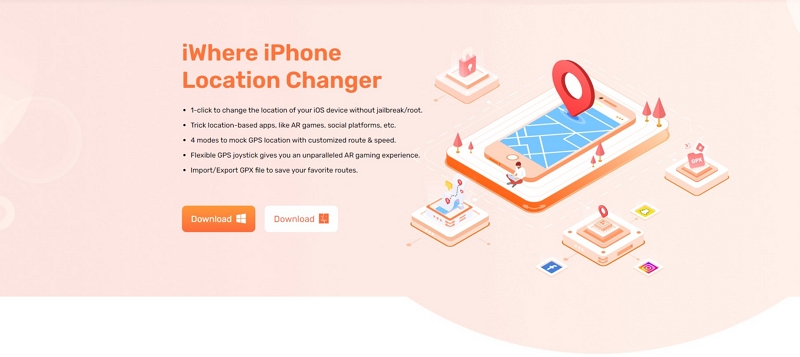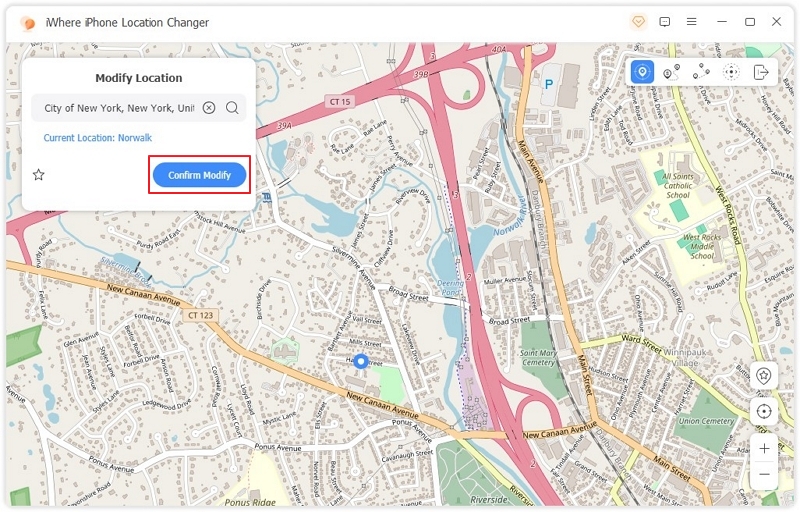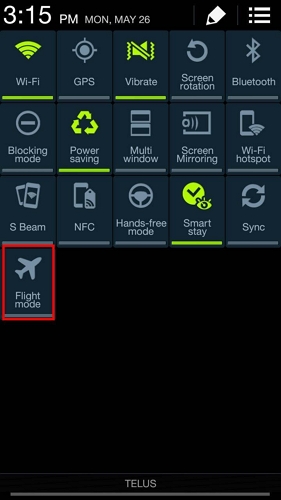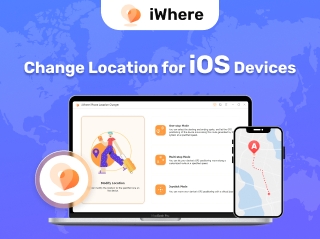Updated on 2024-07-11
2432 views
5min read
Think turning off Location Services gives you complete privacy? Think again. Both Android and iOS devices can still be tracked in various ways through apps, connections to public networks, or even cellular towers. This can happen with your consent, like location-based permissions within apps, or without your knowledge.
But don’t fear! This guide will inform you about all the methods used to track you even when your Location Services are off. You will also discover the ways to genuinely turn off all features and stop anyone from tracking your location. Additionally, we’ll introduce you to powerful software designed to mask your location and protect your privacy.
Part 1: Can My Phone Be Tracked If Location Services Are Off? [Detailed Answer]
The Short Answer: Yes, your phone can still be tracked even with Location Services disabled.
How Location-Tracking Works (With Location Services ON):
Your phone uses several technologies to determine its location. First, it has dedicated GPS hardware, designed to receive signals from satellites for the most precise location tracking. Also, your device collects data from nearby Wi-Fi and cell towers.
What Happens When You "Turn Off" Location Services:
- GPS Deactivated: Your phone stops actively querying GPS satellites.
- Wi-Fi & Cellular Data Still Used: However, your phone may still approximate your location using Wi-Fi and cellular signal triangulation methods.
- App-Level Permissions: Even if system-wide Location Services are off, individual apps you’ve granted location permissions can track you in several ways.
What Remains "On" and Could Track You:
- Cellular Provider: Your mobile provider always knows where you are based on the cell towers your phone is constantly connected to.
- App Data Collection: Like IP address which gives away your location.
- Wi-Fi and Bluetooth: Passively tracked in places with known Wi-Fi networks or detectable Bluetooth beacons.
Part 2: How Can Your Phone Be Tracked Without Location Services
Now that you know your phone isn’t completely shielded from tracking, let’s see all the potential ways someone might be keeping tabs on your location.
Method 1: Bluetooth
Bluetooth beacons, found in stores and public areas, emit a low-energy signal that can be detected by your phone if Bluetooth is enabled. If your phone’s Bluetooth is on and you have certain apps installed (made to communicate about your location), these apps can see the beacons and log your interactions. So, someone can build a pattern of your movements based on where the beacons are installed.

Method 2: Public WiFi Networks
Every device connected to the internet has a unique IP address. Think of it like a digital mailing address. So, when you connect to a public Wi-Fi network, your IP address gets linked to that network. This IP address gives away the general area you’re in, allowing businesses and individuals to track you.
Method 3: Cell Carrier Towers
Your phone constantly “talks” to nearby towers to send texts, browse the web, use apps, or make a call. This creates a record with your carrier and shows which towers your phone talks to. Based on this, your carrier can narrow down to a 300-meter area.
They use this data for analyzing your locations or simply share it with a third-party (for targeted advertising). They can also give this information to law enforcement if they want to track your movements for investigations.

Method 4: Malware
Location is not all apps and settings. Malware changes the game. If your phone is infected, it could be silently leaking your location even when Location Services are off.
Worse, malware is designed to steal more than just your location. From monitoring your online activity, sensitive information, banking details, to photos and videos — these apps can transmit these information without your knowledge.
Method 5: Sting Rays
Stingrays (also known as IMSI catchers or cell-site simulators) are devices that disguise themselves as legitimate cell towers. Nearby phones are tricked into connecting to them instead of real towers. This allows the Stingray operator to pinpoint locations or even intercept calls and messages.

Part 3: How To Stop Someone From Tracking Your Phone Without Turning Off Location Services
You do not have to just accept the fact that your phone is being tracked even when the Location Services are off. You can reclaim your privacy! Here are some powerful ways to hide your location from prying eyes:
1. Ultimate Way: Modify Your Location With iWhere iPhone Location Changer
iWhere is a powerful location spoofing tool that uses advanced technology to mask your real GPS location and makes it appear that you’re physically somewhere else. It’s easy to use and allows you to teleport to any point of the real world with a single click. You can use this tool to fake walking, cycling, or driving with flexible speed options. And it’s very good for modifying location on location-based apps that are not accessible within your region.
Also, iWhere allows you to pinpoint your virtual location anywhere on the map, or you can create custom routes for more complex scenarios. Plus, it works with a wide range of apps. It does not matter whether you want to expand your options on dating platforms, unlock region-specific content in AR games, or do more, it’s got you covered.
How to Use:
Step 1: Go to the iWhere official website and install the iPhone Location Changer software.

Step 2: Start the installed app and click the “Start” button.

Step 3: Connect your iPhone to the computer using a lightning cable and select the “Modify Location” mode.

Step 4: Once you complete the above, a map will appear on your screen displaying your current location. You can use your computer cursor to scroll the map and find the location you’d like to use in faking your iPhone location.

Step 5: Enter the “Destination” address into the “Search box” at the top left and click “Confirm Modify” to confirm the action.
Key Features of iWhere:
- One-click location change.
- Customizable routes (one-stop, multi-stop).
- Simulated movement with speed control (walking, cycling, driving).
- Joystick mode for real-time GPS adjustment.
- GPX file import/export for saving and sharing routes.
Limitations:
iPhone/iPad only
2. Use VPN
A VPN encrypts your internet traffic and routes it through a server in another location. This masks your real IP address and makes it impossible for websites and online trackers to pinpoint your physical location based on your internet activity.
How to use VPN
Step 1: Go to “App Store” or “Play Store” and search for a good VPN app to change your location. Then, install the app on your phone.
Step 2: Launch the VPN app and set it up on your phone. Then, go to the “Location Servers” and choose a location to change your phone location.

Step 3: Tap on the “Connect” button to change your location.
Benefits of Using VPN to Mask Location:
- Enhanced privacy while browsing online.
- Helps bypass geo-restrictions on streaming content.
Limitations:
- Your phone’s actual GPS location remains visible to apps and tracking methods that rely on it.
- VPN can add some overhead and slow down your connection speed.
- Reliable VPN services often require a monthly subscription fee.
3. Turn On Airplane Mode
Turning ON the Airplane mode will disable all cellular, Wi-Fi, Bluetooth, and (usually) GPS radios on your phone. This cuts off your phone’s ability to communicate with the outside world.
How To Turn On Airplane Mode
iPhone
Step 1: Go to the Control Center on your iPhone.
- If you’re using iPhone X or later, swipe down from the top-right corner of your screen.
- For iPhone 8 or earlier, swipe up from the bottom of your screen.
Step 2: Tap on the “Airplane” icon to turn on the Airplane mode.

Android
Step 1: Swipe down from the top of your Android screen to access the “Quick Settings” menu.

Step 2: Locate the “Airplane” icon and tap on it to turn on the Airplane mode.
Benefits:
- Quick and temporary way to stop most location tracking.
- No additional software or costs needed.
Limitations:
- You won’t be able to make calls, send texts, or use the internet while in Airplane mode.
- Some advanced tracking methods might still persist.
4. Use Burner Phone [iPhone Only]
Using a burner Phone (another iPhone) is also an effective way to stop someone from tracking your original location. This method involves utilizing a different iPhone to update your location on the app the person is using the track your location. See how this works below:
Step 1: On another iPhone, sign in to your account using the same Apple ID credentials on the original iPhone.
Step 2: Open the “Find My” app on another iPhone.
Step 3: Tap on “Me” tab at the bottom right side and select “Use This iPhone as My Location”.

Turn off the location sharing in Find My on your original iPhone to complete the process.
Benefits:
- Increased anonymity when used carefully.
Limitations:
- Costly if used frequently.
- Less convenient than your everyday phone.
- Cell towers will log the burner phone’s location, but it won’t lead directly back to your identity.
FAQs
Can someone track my phone without me knowing?
Unfortunately, yes — your phone could be tracked even without your active knowledge. Methods like malware, Stingrays, or access to your cell carrier data could be used without your awareness.
How do you know if someone is tracking your location?
While here are some potential signs, they aren’t foolproof:
- Rapid Battery Drain: Tracking apps constantly run in the background, draining your battery faster than usual.
- Unexpected Data Usage: If your data usage spikes without explanation, it could indicate that hidden apps are sending your location information.
- Strange Phone Behavior: Malware can cause glitches, slowdowns, or apps opening on their own.
Moreover, If you find any suspicious apps you didn’t install or odd settings changes, someone might have tampered with your phone. Ensure a factory reset to erase all the settings.
How to make your phone impossible to track?
Sadly, there’s no 100% foolproof solution. Here’s how to get as close as possible:
- Use Location Spoofing (iWhere): This masks your true location, confusing tracking attempts.
- Only install trusted apps.
- Turn Off location when not needed. Reduce the amount of time your phone broadcasts its location.
- Not connecting to the public WiFi.
Conclusion
Your phone acts as your digital footprint, and understanding the ways your location can be tracked by a company or individual is a smart step towards reclaiming your privacy. You will have to utilize iWhere and practice good digital hygiene. More importantly, you will have to be mindful of the apps that you download to gain significant control over your location.
Protecting your location data isn’t just about shielding yourself from advertisers or third-party apps, instead, it’s about exercising your fundamental right to control your own digital identity. Don’t just accept the fact that your movements can be tracked!
